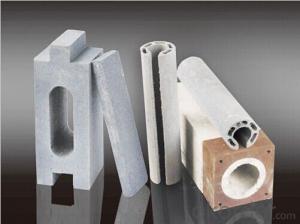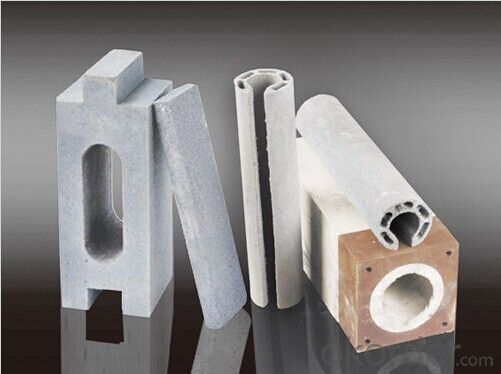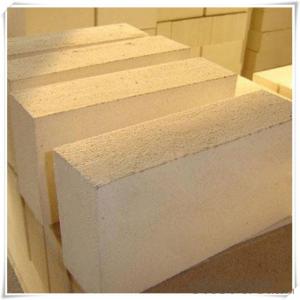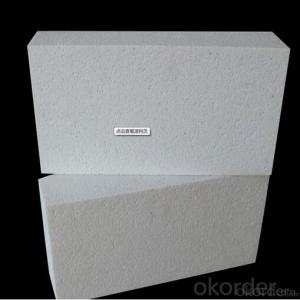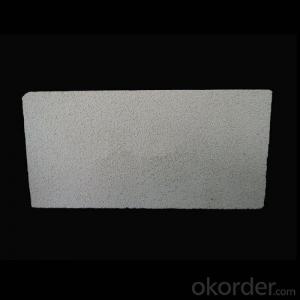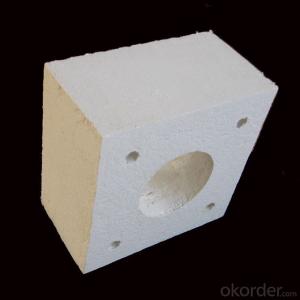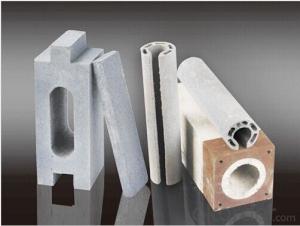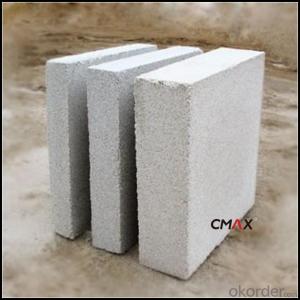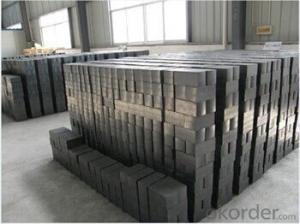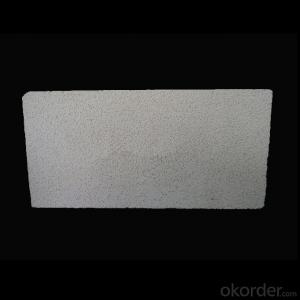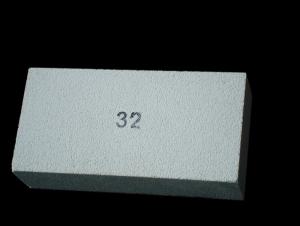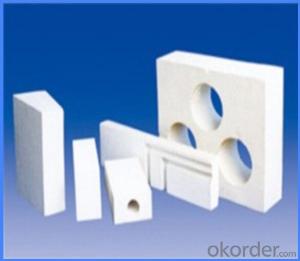Silicon Nitride-Carborundum Insulating Fire Brick
- Loading Port:
- China Main Port
- Payment Terms:
- TT OR LC
- Min Order Qty:
- -
- Supply Capability:
- -
OKorder Service Pledge
OKorder Financial Service
You Might Also Like
1. Characteristic
High strength
Low thermal expansion coefficient
Good thermal conductivity and thermal shock resistance
Good resistance to liquid aluminum erosion capability
High erosion
2. Applications
Widely used in large aluminum electrolytic cell of lining material. In the electrolytic aluminium industry, because of nitride bonded silicon carbide products can be made thin wall lining, enlarge the tank capacity, improve the thermal conductivity, can rapid cooling, and they are permitted to enter a higher power, increase the tank production capacity, at the same time, in its surface can form alumina and cryolite of eutectic content, in order to protect the tank lining work layer, prolong service life, therefore, this product is aluminum industry generally welcome.
3. Physical and Chemical Index of silicon nitride bonded silicon brick used in cooling stave
| ITEM | INDEX | |||||||
| SiC % | 72 Min | |||||||
| Si3N4 % | 21 Min | |||||||
| Fe2O3 % | 0.5 Max | |||||||
| Porosity % | 18 Max | |||||||
| Bulk density g/cm3 | 2.65-2.70 | |||||||
| Bending strength MPa | Room temperature °C | 42 | ||||||
| 1400 °C | 45 | |||||||
| CCS MPa | 150 Min | |||||||
| Thermal conductivity w/m·k 1250 °C | 15-18 | |||||||
| Tolerance | 0-100 mm | ±1.0 | ||||||
| 101-300 mm | ±1.5 | |||||||
| 301-500 mm | ±2.0 | |||||||
| More than 500 mm | ±0.5% | |||||||
| Surface irregularity | 0.2 Max | |||||||
| Face verticality | 0.5 Max | |||||||
| Diagonal difference | 2 Max | |||||||
- Q: Can insulating fire bricks be used in the construction of rotary kilns?
- Yes, insulating fire bricks can be used in the construction of rotary kilns. Insulating fire bricks are designed to provide high thermal insulation, making them ideal for applications where heat retention is important. In the construction of rotary kilns, insulating fire bricks can be used as a lining material to minimize heat loss from the kiln and improve its energy efficiency. Additionally, these bricks have good resistance to thermal shock, which is crucial in the high-temperature environment of a rotary kiln. Overall, using insulating fire bricks in the construction of rotary kilns can help enhance their performance and reduce energy consumption.
- Q: Can insulating fire bricks be used in the construction of glass slump molds?
- Yes, insulating fire bricks can be used in the construction of glass slump molds. These bricks are designed to withstand high temperatures and provide excellent insulation, making them suitable for use in kilns and other heat-intensive applications like glass slumping. Their insulating properties help to maintain a consistent temperature during the slumping process, ensuring the glass molds are formed correctly.
- Q: Do insulating fire bricks have a low thermal conductivity?
- Yes, insulating fire bricks have a low thermal conductivity. These bricks are specifically designed to minimize heat transfer, making them an excellent choice for applications that require thermal insulation. Compared to regular fire bricks, insulating fire bricks have a lower density and higher porosity, which helps to reduce the flow of heat through conduction. This low thermal conductivity allows the bricks to act as effective barriers against heat transfer, keeping the surrounding areas cooler and increasing energy efficiency.
- Q: Can insulating fire bricks be used in glass melting furnaces?
- Yes, insulating fire bricks can be used in glass melting furnaces. These bricks are designed to withstand high temperatures and provide excellent insulation, making them suitable for use in furnaces where glass is melted.
- Q: Can insulating fire bricks be used for insulation in power plants?
- Insulating fire bricks have proven themselves to be effective for insulation purposes in power plants. These bricks are specifically designed to possess exceptional thermal insulation properties, making them highly suitable for applications involving high temperatures. They can endure extreme temperatures and effectively insulate power plant operations, thus preventing heat loss and enhancing energy efficiency. In power plants, insulating fire bricks find extensive usage in various areas, including furnaces, boilers, kilns, and chimneys. They can be utilized to line the walls, floors, and roofs of these structures, aiming to minimize heat transfer and maintain optimal temperatures within the equipment. The utilization of insulating fire bricks in power plants offers numerous benefits. These bricks aid in reducing heat loss, enhancing combustion efficiency, and alleviating thermal stress on the equipment. They create a barrier against heat transfer, thereby conserving energy and minimizing operational expenses. Moreover, their insulation properties contribute to a safer working environment for power plant personnel. Nevertheless, it is important to exercise caution when selecting insulating fire bricks for power plant insulation. The specific requirements and conditions of the power plant should be carefully considered. Factors such as operating temperature, exposure to chemicals, and mechanical stress should be taken into account to ensure that the bricks are capable of withstanding harsh conditions and delivering long-lasting insulation performance.
- Q: Are insulating fire bricks resistant to thermal shock cracking?
- Yes, insulating fire bricks are resistant to thermal shock cracking. These bricks are specifically designed to withstand high temperatures and rapid changes in temperature without cracking. They have a low thermal conductivity, which means they can effectively trap and retain heat without being damaged by thermal shock. Insulating fire bricks are often used in applications where thermal shock is a concern, such as in furnaces, kilns, and other high-temperature environments. Their resistance to thermal shock cracking makes them a reliable choice for these types of applications.
- Q: Can insulating fire bricks be used in the insulation of boilers?
- Yes, insulating fire bricks can be used in the insulation of boilers. These bricks are designed to withstand high temperatures and provide excellent thermal insulation, making them ideal for use in boilers to minimize heat loss and increase energy efficiency.
- Q: Do insulating fire bricks emit any harmful gases when heated?
- No, insulating fire bricks do not emit any harmful gases when heated. They are specifically designed to have excellent thermal insulation properties without releasing any harmful emissions.
- Q: Can insulating fire bricks be used in the construction of brick kilns?
- Yes, insulating fire bricks can be used in the construction of brick kilns. Insulating fire bricks are specifically designed to have high thermal resistance, which makes them ideal for applications where insulation is required. In brick kilns, insulating fire bricks can be used to line the walls, floor, and roof of the kiln, helping to retain heat and improve energy efficiency. These bricks are capable of withstanding high temperatures and can provide insulation against the heat generated during the firing process. Additionally, insulating fire bricks can also help reduce heat loss, resulting in faster and more efficient firing cycles. Overall, using insulating fire bricks in the construction of brick kilns can enhance their performance and contribute to more effective and sustainable kiln operation.
- Q: Can insulating fire bricks be used in the construction of steam boilers?
- Yes, insulating fire bricks can be used in the construction of steam boilers. They are designed to have high thermal resistance, low heat conductivity, and excellent insulation properties, which make them suitable for use in steam boilers. Insulating fire bricks help to retain heat efficiently, reduce energy loss, and improve the overall efficiency of the boiler system.
Send your message to us
Silicon Nitride-Carborundum Insulating Fire Brick
- Loading Port:
- China Main Port
- Payment Terms:
- TT OR LC
- Min Order Qty:
- -
- Supply Capability:
- -
OKorder Service Pledge
OKorder Financial Service
Similar products
Hot products
Hot Searches
Related keywords
